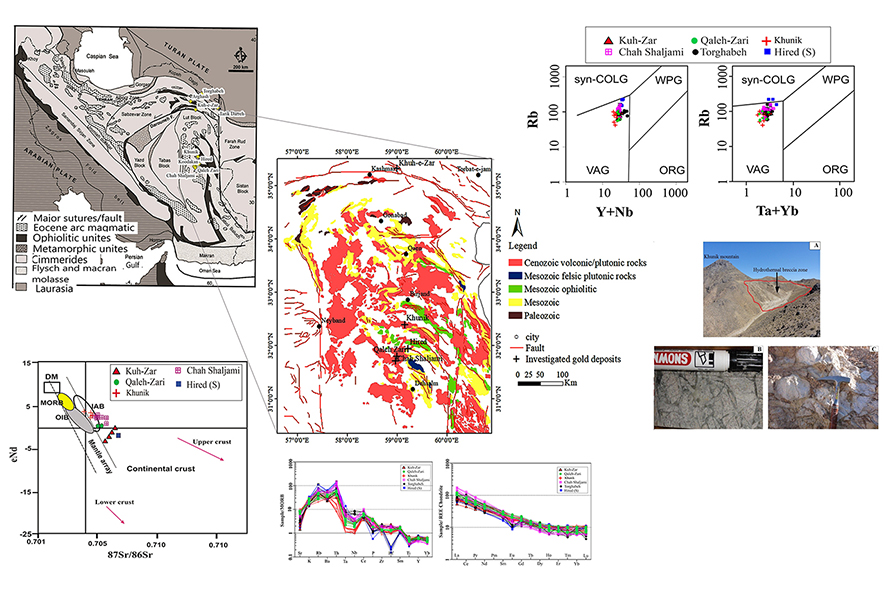Gold Metallogeny in the East of Iran
DOI:
https://doi.org/10.13133/2239-1002/17724Abstract
Exploration in the east of Iran (EI) led to the identification of four types of gold mineralization in nine regions, consisting IOCG-type gold deposits (Qaleh-Zari, Koodakan, and Kuh-e-Zar), epithermal-type (Arghash, Khunik, and Chah Shaljami), reduced intrusion-related gold system (RIRGS) types (Tarik Darreh and Hired), and mesozonal-type orogenic gold deposits (Torghabeh). The compositional diversity of porphyry intrusions in these tectono-magmatic environments generally form in volcanic arc settings except for Hired deposit that is in a syn-collision setting, with the most restricted range (different types of granitoids that are partly high-K calk-alkaline to shoshonitic) which occurred in three main episodes. They are: (1) Triassic in which Tarik-Darreh and Torghabeh deposits generated, (2) Eocene –Oligocene episode, when the Qaleh-Zari, Koodakan and Kuh-Zar, Khunik and Chah-Shaljami formed, and (3) Oligo-Miocene episode for Hired deposit. The reduced intrusion-related gold (RIRGS) system (Hired and Tarik Darreh deposits) are related to the reduced ilmenite-series granitoid, whereas the other deposits are related to oxidized magnetite-series granitoids. Evaluation of tectonic setting as well as local controls strongly suggests that continued exploration in the region will lead to the identification of additional gold deposits.

Downloads
Published
Issue
Section
License
Copyright (c) 2022 Periodico di Mineralogia

This work is licensed under a Creative Commons Attribution 4.0 International License.

